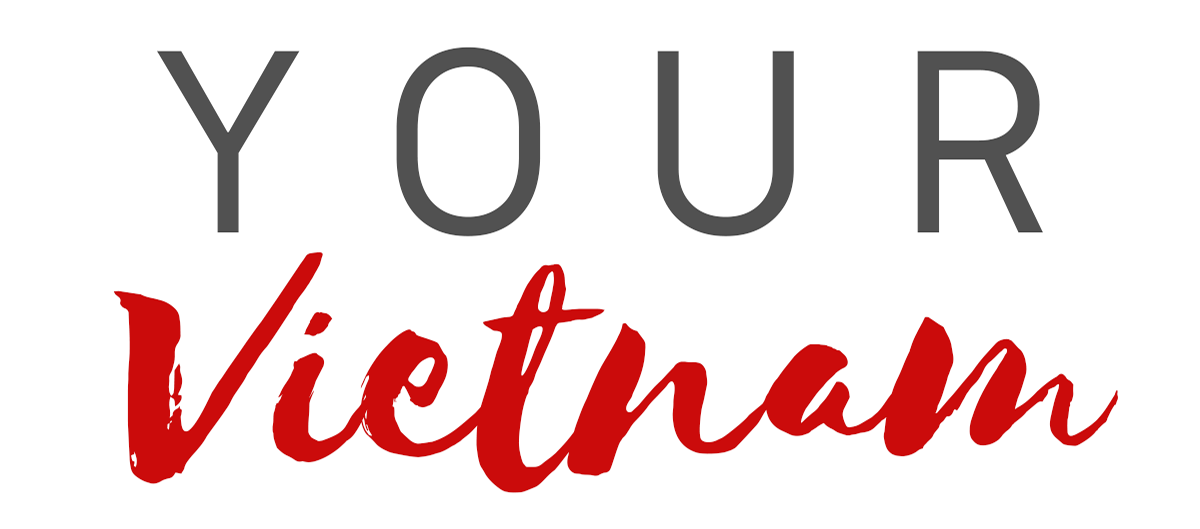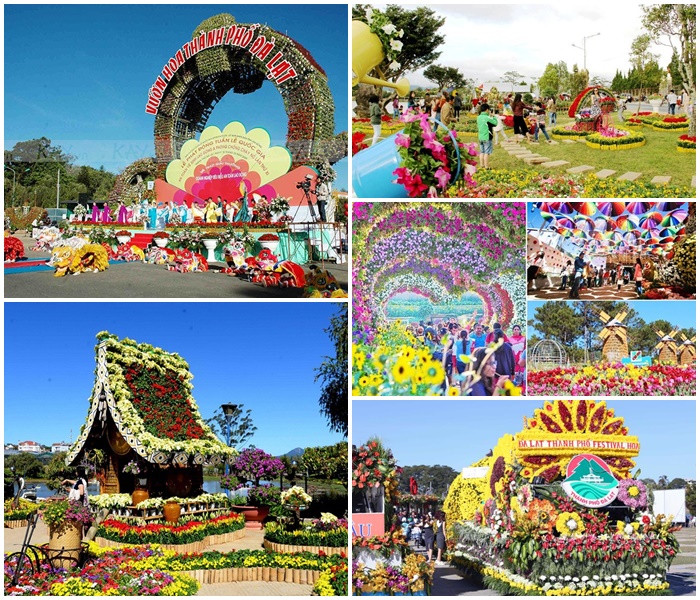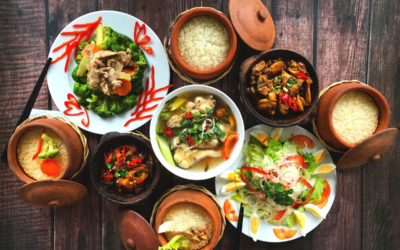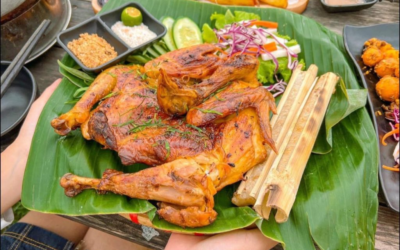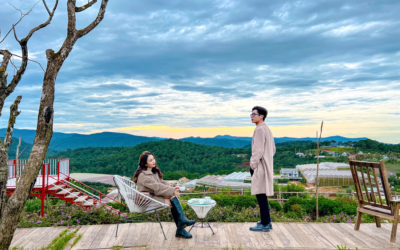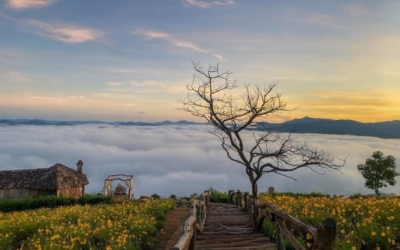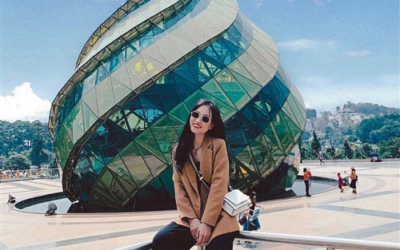Festival in Dalat is something that any visitor should not miss when coming. As Dalat is an attractive tourist city in Vietnam. Not only because its cool climate, fresh air and beautiful natural scenery, travel Dalat is also attracted by cultural beauties through typical festivals. Let’s find out what are these festival!

Flower Festival in Dalat
Da Lat is famous for being a city with blooming flowers. Along Da Lat road, visitors can see the brilliant yellow of wild sunflowers and the green of the pine forest. Besides, the gentle purple color of the virgin flowers and the delicate pink color of the butterfly flower also appear interwoven harmoniously and beautifully.
The pure white color of the micro-walls and the gentle purple-pink color of the paper flower petals… are harmonious and cheerful colors on the walls and roofs of Da Lat.
To honor the flower growers and the beauty of Da Lat, since 2005, every 2 years, Da Lat solemnly organizes a flower festival called “Da Lat Flower Festival”. It happen at the end of the year to serve local people and attract a lot of tourists to visit. And this also helped to honor floriculture here.

The main stage where the Festival takes place is usually located near Xuan Huong Lake. From this, thousands of professional actors and the masses will show their beautiful performance . In addition to the opening and closing performances and unique cultural performances, visitors can participate in other attractive programs.
Flowers on the street with many large and small flowers, trade fairs, love festivals and mass weddings of couples, wine festivals, conquest programs Langbiang peak…
Da Lat people often spend much time and effort decorating the streets and routes to become more sparkling than ever to prepare for the Festival. Attending this great Festival in Dalat will surely bring visitors unforgettable experiences.
==> Learn more about How to get Da Lat series
Tea Festival

As one of the prominent and unique festivals in Da Lat, the tea festival happen in December every year. It is in response to the movement of supplying fresh raw materials by tea enterprises, every year. The themes of the festival include:
- Art activities
- A contest of picking tea with the same colors of the Central Highlands
- A contest on tea knowledge and finally a tea singing…
The Tea festival in Dalat is a place to express the pride of the tea people in the dreamland. This is also an appropriate time for businesses to promote their brands, learn about production and business experiences and create new business opportunities.
Conditions to attract investment capital of world enterprises in the context of economic integration. When participating in this great Festival, remember to buy some specialty tea as gifts for relatives and friends!
Central Highlands Gong Festival
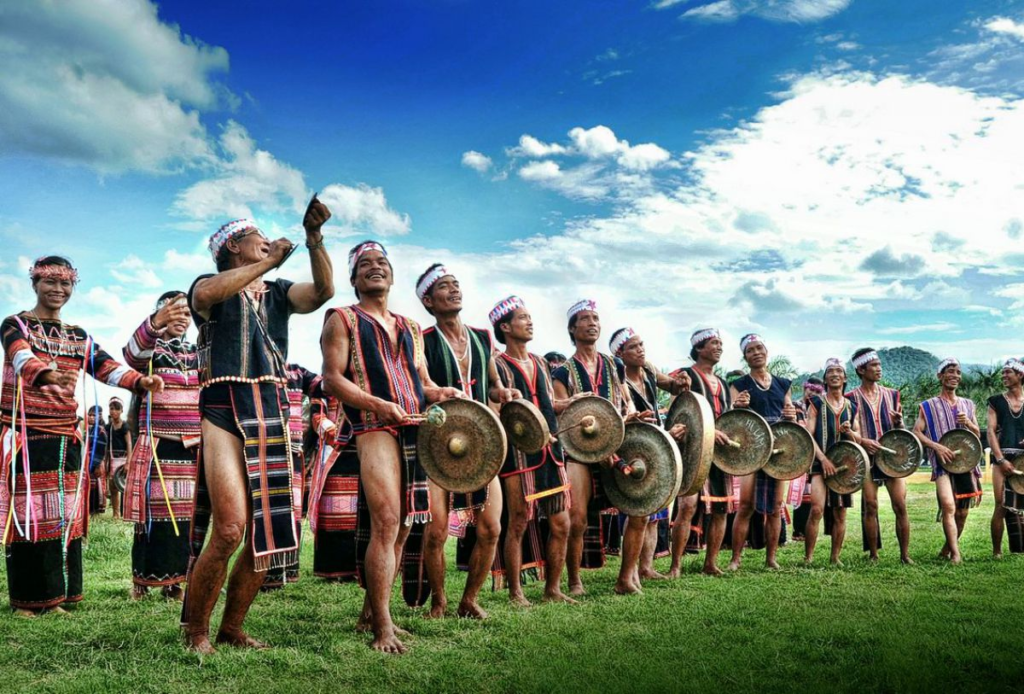
What is the central highlands gong festival?
The Central Highlands Gong Festival happen annually alternately in the provinces, including Lam Dong province. This is also an opportunity for visitors to discover the Gong Festival in Dalat.
This Festival in Dalat helps to promote the cultural image of gongs and attract many domestic and international tourists. The Festival was recognized by UNESCO as an Oral and Intangible Masterpiece of Humanity on November 15, 2005. Since that, it has increasingly attracted tourists, contributing to building the country’s image.
How does this Gong Festival in Dalat go?
The Central Highlands Gong Festival will include two parts: the ritual part and the festival part. During the ceremony, visitors will be introduced to the village, the birth of gong culture, and a picture of the life of the ethnic groups at the foot of Lang Biang mountain.
In the ritual part, the most important thing is the ceremony to pray to the Fire god. The village elder will invite the head of the group to light the fire. And the young men and women of ethnic minorities will dance the ching Wă kwang to welcome the gods and celebrate the New Rice.
Besides, visitors will admire the typical dances of ethnic men and women. They can enjoy an aromatic barbecue and sip passionate Can wine. These are all rituals of the K’Ho Lach ethnic group. The stories are passed down orally for generations. So it will be extremely useful and exciting if visitors can witness and immerse themselves in the rituals. This sacred ritual.
After the end of the ceremony comes the Assembly part – what visitors usually look forward to the most. Each time the gong is sounded to introduce to visitors about:
- The life associated with the mountains
- The life associated with forests of the villagers
- The birth of the gong, the buffalo stabbing festival, the new rice celebration, etc.
The specific activities of the Gong Festival in Dalat
Through the narration of the villagers and their dances, visitors will understand more about the life associated with the mountains and forests of the villagers and the birth of the gongs in Da Lat.
Next, both tourists and villagers will dance together in the Xoan dance of the Central Highlands. Sinus is the way to call the collective dances of the Bana people that have existed for a long time. Anyone can participate with this sinus dance. In the lively sound of gongs, boys’ and girls’ rhythmic and flexible Xoan dance will attract everyone into the sinus ring to dance together.
Then there are a series of unique dances and dances that visitors can only admire at the tourist destination of Da Lat.
The beginning is a buffalo dance performed by ethnic and lowland boys to the sound of buffalo mule. Next is the dance “Hunting Drop P’nu” (As the name suggests, village boys will dance to hunt with lowland girls). The P’Ro ching dance to find buffalo. The dance “I go to pick forest leaves” (by village girls dancing with lowland boys) and Dance “Flower Langbiang” (performed by village girls).
All of these dances are interesting and new to first-time visitors. It carries the typical culture of the Lach ethnic group.

Finally, there are dances from the village of Gia Lai village on the night of the moon (the girls and boys perform together), “K’Dung K’Lang love song,” “The harvest day in the Village,” and “My Love by the Stream.”
In addition, visitors can also immerse themselves in community games or dance and exchange with the people here.
===> Click here to find more attractive destination in Dalat
National Instrument Resonance Week
The last days of the year are when the weather in Da Lat is the most beautiful of the year; thousands of flowers bloom brightly, and many exciting festivals await visitors.
Ethnic Instrument Resonance Week contributes to promoting and introducing to domestic and international tourists various musical instruments. For example, stone lute, T’rung, gong, etc., of the Churu indigenous peoples. Ma, K’Ho, and Ede in the Central Highlands.
Visitors to the week of resonating ethnic musical instruments are immersed in the vibrant atmosphere of the Festival. An also discover cultural values, customs, cuisine, especially music – the intangible artistic masterpiece of the Central Highlands ethnic groups. Here, visitors have the opportunity to participate in many special activities such as: admiring ethnic musical instruments, enjoying K’Ho cafe, performing Central Highlands music, and playing many Central Highlands folk games (walking on stilts, walking on stilts, etc.). Wearing wooden sandals for 3 people, balancing bridge, stick fighting…), dressed up in costumes of the Central Highlands. It is an exciting experience for visitors to immerse in the space bearing the characteristics of the Central Highlands ethnic groups .
The week of reverberation of ethnic musical instruments in Da Lat means preserving and promoting the cultural identity of the Central Highlands ethnic groups. At the same time, this is also a cultural event attracting tourists to Da Lat – Central Highlands.
Buffalo kill Festival in Dalat
What is buffalo kill festival?
Festival in Dalat always attracts visitors by its profound spiritual and human meaning, for example the Buffalo Stabbing Festival. This Festival is prepared for 3 days from December to March of the lunar calendar in front of communal houses, communal houses, or under an ancient canopy in the blazing red fire.

This is a traditional festival in Dalat of ethnic groups in the Central Highlands, such as Stieng, Bana, Co Tu, Ede, Xe Dang, Xedra, Brau, etc., to thank the gods who have protected and supported the villagers doing business, good harvest, healthy children.
The activities during the buffalo kill festival day
Opening the Festival, the shaman will pray to the gods of heaven – water – mountains – rivers, and streams to witness the buffalo stabbing festival of the villagers and ask for help for the villagers to grow a lot of rice and raise a lot of cattle, beast,…
After that, the female painters in the women’s village wore “Phia” – a women’s ceremonial dress and “Kteh” floral skirts, with white headscarves like the color of wild orchids in bloom. They dance to the music of the gongs with flexible, diverse, seductive, and attractive dance birds.
After the singing and dancing performance, people will stab the buffalo with their heads. This task is assigned to the tall, muscular boys in the village. They will wear the red scarves and the the “Blan” vestment or a sleeveless jumper.
Embroidered with colorful patterns on both sides of the bodice, wearing a “Kteh” flower loincloth and ready to wait for the order to play.
During this time, gongs continuously rise to stir the air. The boys took the Peh (long knife), cut off the buffalo’s hind legs so that it knelt down, and plunged their noses into the buffalo’s grave. Everyone will praised the guy who only stabs the buffalo and dies immediately.
When the buffalo falls, it is also the time when the gongs resound, the singing. The dances become more bustling as if creating a belief in a good harvest, continuing to work hard in production despite the uncertainties, natural disaster, enemy calamity.
After stabbing the buffalo, the buffalo will be slaughtered and divided equally among each kitchen in the village. Some buffalo meat is saved for communal eating at the Rong house, while the buffalo’s head is put on the curb.
What happen on the next day of buffalo kill festival
On the morning of the next day, there will be a procession of the buffalo head to the Rong house. The village buffalo horns will be kept and hung on the wall of the Rong house. Buffalo blood will be mixed with wine to wash the traditional treasures of the Rong family.
Continuing the ritual, the village began to eat and play. The oldest woman will raise the bar first, followed by the order that more senior people drink first and the younger ones drink later. Besides the wine party, the village also has activities such as talent contests by wrestling, whipping…
Through the buffalo stabbing festival, many features are clearly shown with its special meanings, which is the nature of the Festival. Community, love of nature, etc. The maintained Festival also continues the ancient cultural traditions of the Central Highlands. That precious culture has been preserved through generations.
Festival in Dalat: Rain Festival
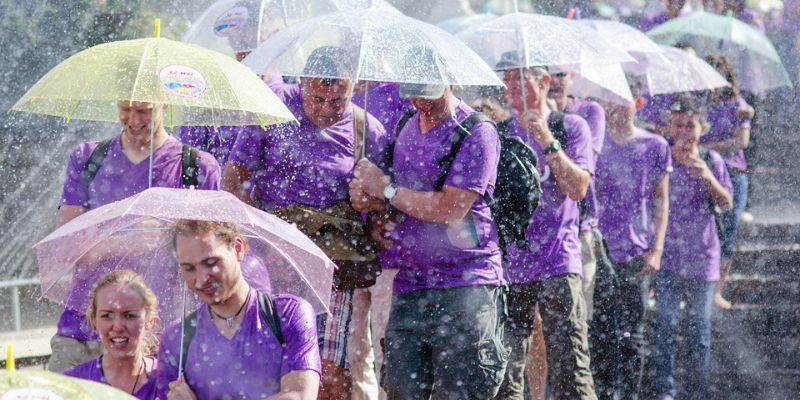
It is no coincidence that the rain here moves people so much. The rain in the mountainous town of Da Lat has created many inspirations for composing poetry and music… The highland rain has evoked many thoughts, worries, and colors of romantic stories…
Perhaps that’s why tourists choose the rain in the mountain town of Da Lat as the main theme for the 2014 summer festival season in the misty mountain town…
The first Da Lat Rain Festival with the theme “Seducing the rain of Da Lat” happen from August 7 to 10, 2014. This is a program in the series of attractive activities “Exciting summer in the Central Highlands” of the Central Highlands – Da Lat National Tourism Year.
The idea of ”turning” Da Lat rain into a unique tourist product of tourists has inspired tourists. They love Da Lat even more to want more surprising and exciting experiences about the highland mountain town.
“Waiting for Rain” is the opening program of the 2014 Rain Festival in Dalat. It happen at Lam Vien Square and some restaurants in the mountain town. Following “Waiting for the Rain” is an exhibition of paintings and art photos with the theme “Romance in the rain of Da Lat” held during the Festival.
In addition, the Festival also has many rich and exciting activities with games in the rain, Ho Xuan Huong pedalo water bike ride, “Da Lat rainy catwalk” with attractive performances of rain fashion and fashion. And the Festival ended with the art show “Rain Angel” at the fountain in Lam Vien Square.
The ceremony of worshiping the stream god
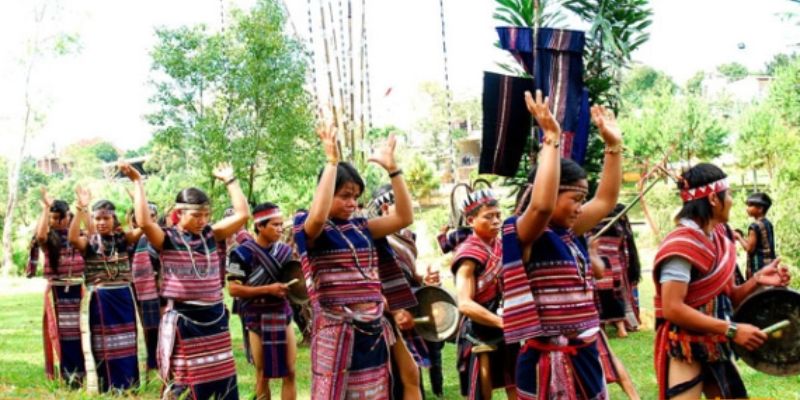
The Festival of worshiping the stream god aims to thank the water god for bringing good luck with favorable rain and wind. This is one of the most unique festivals in Da Lat that visitors can participate in at the end of March every year.
After harvesting the crop and celebrating the new rice, people here choose a good day. It is to clean the village, clean the stream, arrange the water trough, and make pork and chicken to thank you.
According to the Ma people’s concept, the earth god, water god, mountain god, and their ancestors are sacred gods who protected and helped the village have a favorable year. All villagers gather at Suoi (selected area). And the shaman will preside over the worshiping ceremony with the offering tray of pork, chicken, and, most importantly, a pot of diluted blood.
In particular, people decorated the stream area where the festival took place before with a greeting gate made of leaves and long leaves, hanging decorative objects, and even erecting decorative pillars in the form of a tree.
After completing the rituals at Suoi, everyone collects water into water containers and carries them home to manage them.
Meanwhile, a group of people will follow the celebrant to go the stairs of each house. They sing prayers and pour blood at the foot of the stairs to pray for good luck for the owner. After that, the whole village gathered at the community house to have a party. They drink can wine, and dance in the atmosphere of the Festival with the sound of gongs.
Worshiping Ceremony to God BoMung
The Chu Ru indigenous has long settled in the highlands with farming as the main occupation. They will hold the worshiping ceremony of BoMung. Villagers have built ditches, roads leading water from rivers and streams to fields for lush crops, new rice, and fruit-laden crops.
Traditional agricultural festivals include worshiping the dam god, the water ditch god, and the rice god. People hold the BoMung worshiping ceremony around the second lunar month every year. This can gather many villagers to participate in the Festival in Dalat.
On this occasion, when experiencing, visitors will directly feel the traditional culture imbued with national identity. Indigenous people are hospitable and always willing to invite you to stay for dinner and have fun.
On the Festival day, from early morning, villagers gather in front of the courtyard of the Pumpung communal house. Young men and women will line up on both sides to perform rituals. Each side holds a chicken to offer thanks to Yang for good things, healthy villagers, and happy and peaceful families. Each household brought voluntary contributions of chicken and duck, sticky rice, wine, and fruit cakes to invite guests.
Offerings to the gods, people often offer goats, and village owners offer horses, which are animals that symbolize favorable breeding. After all, everyone focused on slaughtering cattle, pigs, and chickens together to eat and drink at the typical house. This is also an opportunity for people to sit together and talk. And also strengthen the love of neighbors, and get closer to each other.
That are the basic information about the big and attractive festival in Da Lat above. Through this article, hopefully visitors have had the choice of combining sightseeing travel and festival tourist. Follow Yourvietnam.org to explore more exciting festival in Vietnam!
